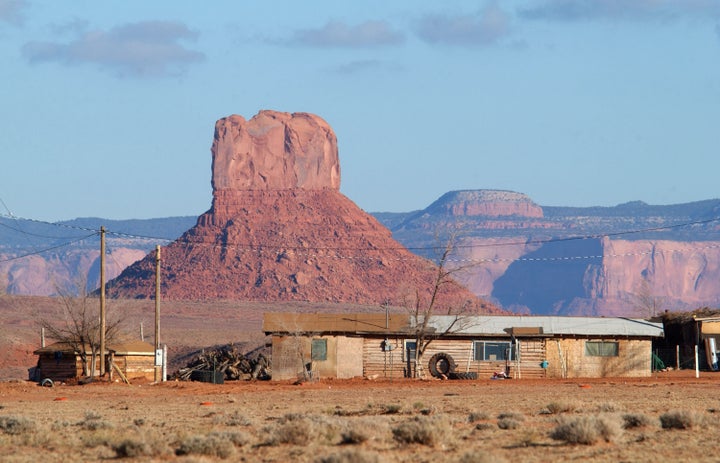
At the turn of the 20th century, Native Americans were known as the "Vanishing Americans." And now, 100 years later, they are one of the fastest growing groups in America.
For instance, in South Dakota -- where there are nine Indian reservations -- every county located on a reservation has shown growth in population while many of the other rural counties have shown a loss.
It is ironic that Indians were known as the "Vanishing American" in the early 1900s because they didn't become citizens of the United States until 1924, so one can say that they really weren't Americans as yet.
For those old enough to remember, think back to when you first started to see African Americans or other minorities in television commercials, or Asian Americans or Hispanic Americans, for that matter.
Prior to the 1980s, nearly all commercials had white actors and presenters only. But something happened as the minority groups continued to grow in numbers. They were looked upon as consumers by the large corporations. Retail chains like J.C. Penney and Sears began to use different minorities in the flyers they inserted into local newspapers and those businesses that utilized television to air their commercials followed suit.
In essence it was not only a revolution in advertising, but a revolution in race relations. Minorities as consumers was a new concept to the corporate big wigs and a century of backward thinking in advertising was suddenly forced to move forward and to be all-inclusive.
The key ingredient in this revolution was money. Minorities had jobs and they were moving up the economic ladder. They now had money to buy cars and other goods and commodities. The mindset that had relegated them to the back of the corporate bus had to change along with the economic growth of the minority races. The color of money is green, and so it didn't matter the color of the person spending it.
But when it comes to Native Americans, this lesson in economic reality has not sunk into the minds of the corporate advertisers located far away from the Indian reservations and, although the local business and retail outlet managers know they have a very strong customer base in the Native American population, their corporate counterparts find it difficult to understand or, worse yet, to absorb this fact.
Native Americans are no longer the "Vanishing Americans." They are rapidly growing in numbers and in economic stability. On the Pine Ridge Indian Reservation alone there are four high schools and several elementary- and middle-schools employing several hundred well-paid teachers and administrators and the majority of these employees are Native American.
There are gaming casinos on nearly all Indian reservations contributing to the economic growth of not only the state, but of the Indian reservations. The people and the tribal governments spend millions off the reservation purchasing goods and services. Every major construction project is usually bid out by firms located in the cities bordering the reservations and these projects that build new schools and tribal government buildings can run into the millions of dollars.
Retail stores such as Walmart are the major recipients of the dollars flowing from Indian country. On any given weekend all you need to do is visit the local Walmart store, and you will find that about 25 percent of the customers in the store are Native Americans. But this reality has not caught up with the corporate powers-that-be living in the cities far away from South Dakota and Indian country and trying to educate them is truly frustrating.
But this is true of most major businesses in South Dakota: They have not learned to look upon the fastest growing population in the state as consumers and, indeed, still look at Native Americans as poverty stricken welfare recipients.
Just as the African American, Hispanic American and Asian American populations grew to the point where their dollars made an economic impact, so too is the Native American population expanding. For the local merchants it is an education in progress and the sooner they learn the faster their businesses will grow; it is simply a matter of economic intelligence.
In order to get this point across, Roger Jordain, then-president of the Red Lake Band of Ojibwe in Minnesota, saw to it that one entire payroll was handed out in $2 bills. The business owners in Bemidji started to call each other trying to find out why their cash registers were suddenly filling up with $2 bills. Jordain proved his point: the citizens of Red Lake spend thousands of dollars every month and the community had better shape up and start to treat his people like customers instead of like dirt. Jordain is now deceased, but he understood the economic power of his reservation and used it to vastly improve race relations. He proved that money is a great equalizer.
And so my advice to merchants in cities like Sioux Falls and Rapid City, South Dakota is to take a lesson from innovators like Roger Jordain: Native Americans are not the "Vanishing Americans" but are instead one of the fastest growing minority groups in the state and they will soon be one of your most important economic contributors.
© 2012 Unity South Dakota.
Tim Giago (Nanwica Kciji), an Oglala Lakota, is President of Unity South Dakota. He was a Nieman Fellow at Harvard with the Class of 1991. His weekly column won the H. L. Mencken Award in 1985. Giago was the founder and first president of the Native American Journalists Association and the founder of Indian Country Today. He can be reached at UnitySoDak1@knology.net.